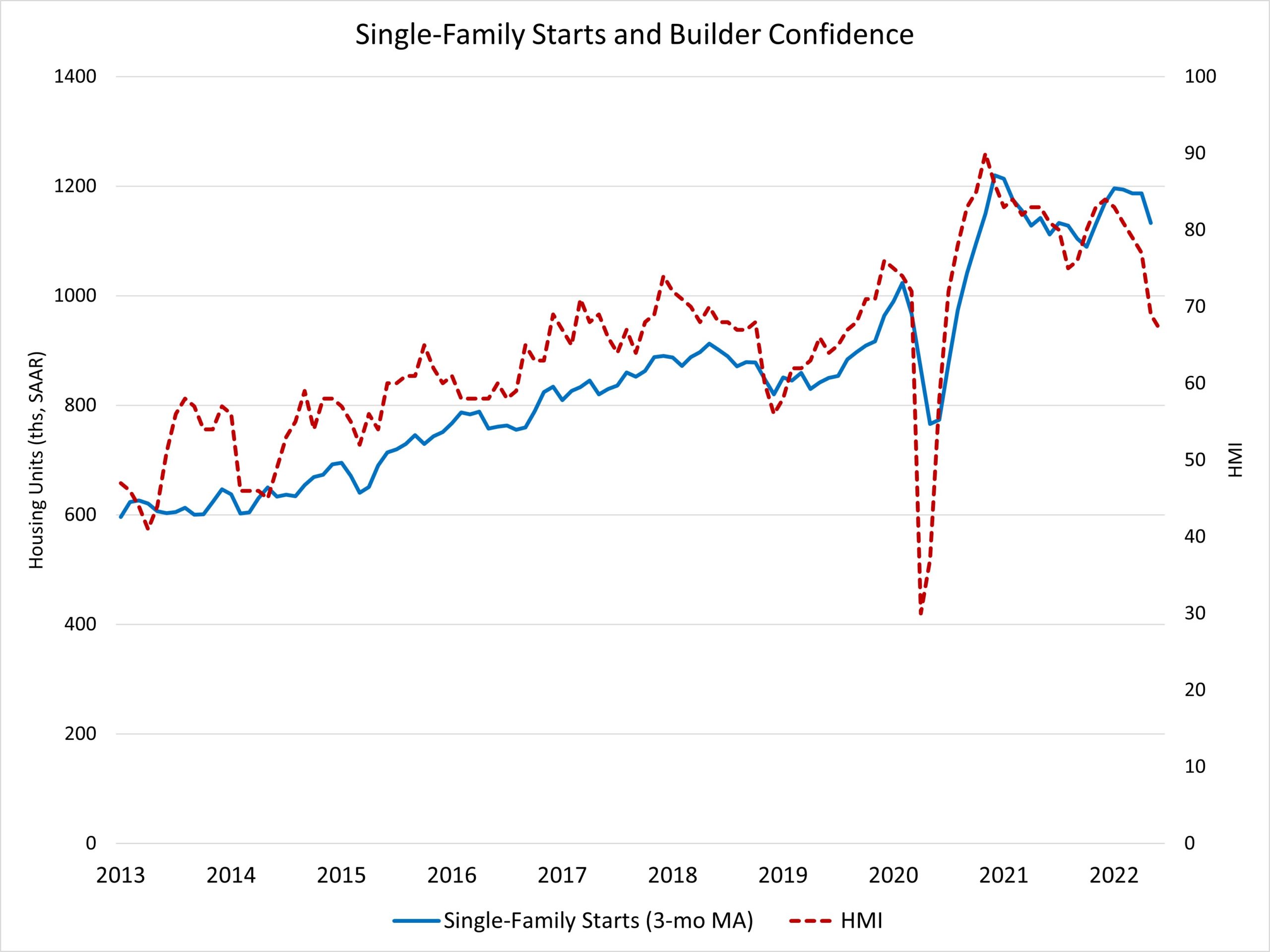Single-family starts declined further in May, as higher interest rates weighed on housing affordability. This follows a sixth straight monthly decline for the NAHB/Wells Fargo HMI. Additionally, the cost and availability of materials, lumber, labor and lots remain key supply-side headwinds. Single-family permits decreased 5.5% to a 1.05 million unit rate in May. Despite declines for housing affordability, a lack of resale inventory continues to partially support demand for home construction.
Overall housing starts declined to 1.55 million units on an annual basis in May, according to a report from the U.S. Department of Housing and Urban Development and the U.S. Census Bureau. The decline was due to weakening for single-family and multifamily construction. The May reading of 1.55 million starts is the number of housing units builders would begin if development kept this pace for the next 12 months.
Within this overall number, single-family starts decreased 9.2% to a 1.05 million seasonally adjusted annual rate. The multifamily sector also fell back off extremely strong April numbers, declining 23.7% in May to a more sustainable 498,000 annualized rate of starts.

With inflation running at a 40-year high, economic policy needs to focus on improving the supply side of the economy by bringing down material, energy and transportation costs. Due to supply-chain effects, there are 152,000 single-family units authorized but not started construction—up 3.4% from a year ago. However, this total number has leveled off recently with slowing for single-family permits.
In June single-family builder confidence decreased 2 points to a level of 67, according to the NAHB/Wells Fargo Housing Market Index (HMI). After peaking at a level of 90 in November 2020, builders have reported ongoing concerns over elevated lumber, OSB and other construction costs, as well as delays in obtaining building materials. The sharp rise in mortgage interest rates for the first half of 2022 has also had an impact on the volume of home construction.
Consequently, the market has now passed an inflection point whereby single-family home building is weakening. We expect further declines in the months ahead, which itself is a recession warning for the quarters ahead. For instance, single-family permits decreased 5.5% to a 1.05 million unit rate. This is the lowest pace for single-family permits since July 2020.
On a regional and year-to-date basis, combined single-family and multifamily starts are 2.1% higher in the Northeast, 1.2% higher in the Midwest, 12.9% higher in the South and 4.3% higher in the West.
Overall permits decreased 7.0% to a 1.70 million unit annualized rate in May. Multifamily permits decreased 9.4% to an annualized 647,000 pace.
Looking at regional permit data on a year-to-date basis, permits are 8.3% lower in the Northeast, 5.2% higher in the Midwest, 4.6% higher in the South and 1.6% higher in the West.

As an indicator of the economic impact of housing and as a result of accelerating permits and starts in recent quarters, there are now 822,000 single-family homes under construction. This is 24% higher than a year ago. There are currently 843,000 apartments under construction, up 25% from a year ago. Total housing units now under construction (single-family and multifamily combined) is 24% higher than a year ago. The number of units under construction is rising on both the total volume of construction, as well as longer construction times. However, it appears the number of single-family units in the construction pipeline is now peaking for this business cycle.
Related


